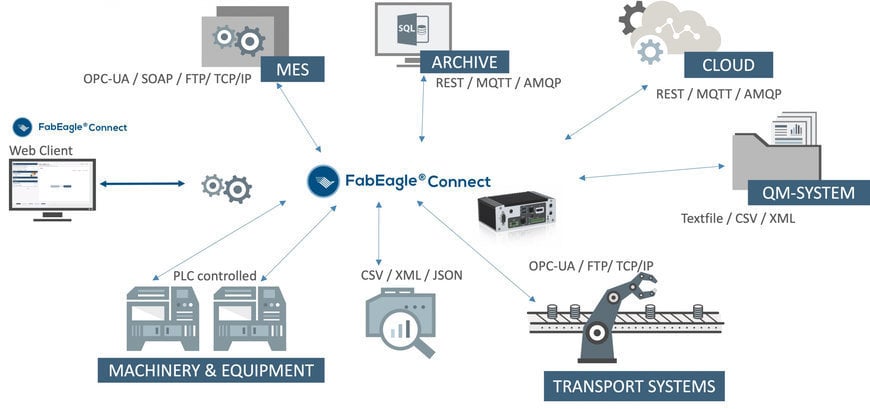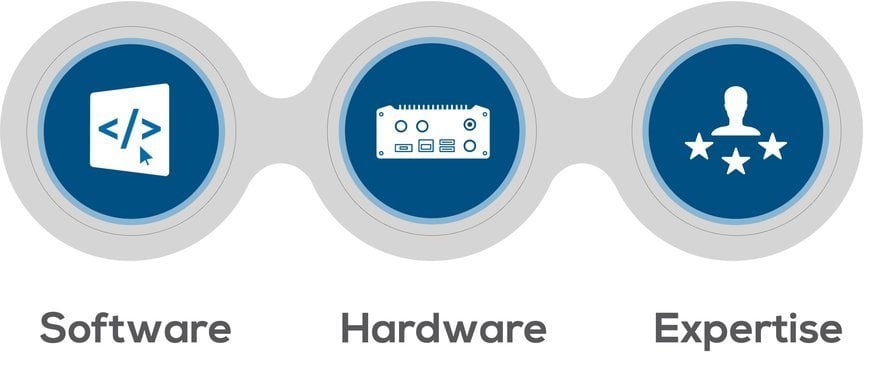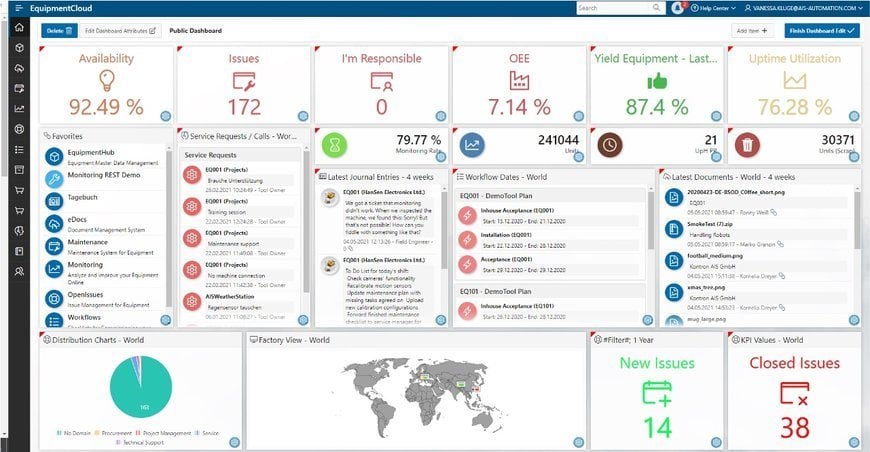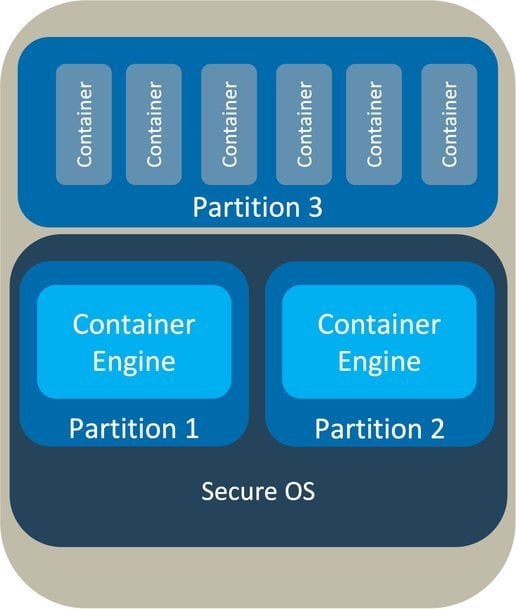www.industry-asia-pacific.com
10
'22
Written on Modified on
Digitalization, networking and IIoT are becoming increasingly important for companies aiming to increase their production or offer new digital services and products
The journey from an IoT pilot project to popular use, however, is often a rocky one. For this reason, Kontron is stepping up its efforts to launch its software toolset under the kontron susietec® brand.

Digitalization projects around Industry 4.0, IIoT and AI (Artificial Intelligence) thrive on the networking of all assets, sensor technology and the integration of a wide variety of data. In practice, there are many proofs of concepts and pilots; however, these topics have not yet been widely implemented in most companies. This is also due to the approach via individual projects. Instead of focusing on projects, the focus should be on processes: Installing a device which measures temperature data is not part of an IoT concept. The solution is no longer hardware alone, which is one of the reasons why manufacturers have to supplement their portfolios with software and expertise in the future.
Hands-on mentality required
Networking, however, is a major preliminary challenge that has to be overcome. This is where partners with industrial know-how are needed who are familiar with the often complex circumstances surrounding control and automation - and who are willing to lend a helping hand instead of hiding behind a hotline.
When it comes to benefiting from networking and data analytics, the focus is often on end-to-end processes that run through entire value chains. It is therefore of little use if only one department takes on the task. The majority of topics are interdisciplinary - the entire company will have to evolve. Therefore, the right set-up and the involvement of people from all departments are essential. Moreover, the multitude of topics and participants makes project management highly challenging. Digitalization is ultimately a comprehensive process that consists of an array of individual projects. The software around IIoT, however, has a deep impact on the company's processes. New complex problems can arise without clear objectives on the part of the company's management. This is especially true when it comes to data collection and processing.
One toolset for all IIoT scenarios
Different digitalization approaches are based on different sensors, machines or devices as well as their data. To avoid reinventing the wheel in every context, Kontron has developed a toolset consisting of hardware, software and expertise that can be expanded as required, while growing with the increasing requirements within the company.

The kontron susietec® toolset enables almost all IIoT application scenarios in industry to be implemented. Close integration of software and hardware development in the Kontron Group is a great advantage: For real-time applications in particular, it is important that hardware such as gateways or other edge devices and the corresponding software are aligned consistently with each other. In the AI environment, algorithms often run at the edge, for example in automated quality control based on computer vision in production. Consequently, coordinated software and hardware solutions are gaining importance in this area. A rising demand for high-performance computing (HPC) is also apparent here.
Minimizing interface problems
Only selected machine and sensor data should migrate to the cloud, not only for latency and security reasons, but also to avoid network overload. This means that data must be pre-processed at the edge and made available for different applications in hybrid infrastructures. This requires middleware that can cache data in order to augment it with timestamps, to aggregate it, to compress it or to convert it. Only then information becomes usable and comparable for data analytics.
At the same time, the susietec® toolset provides a significant contribution to mastering the interface problems that regularly cause a great deal of work on the ground. The majority of the data from the controllers and sensors are typically used for process control in the connection of the systems integrated in the process chain. Based on experience, many projects also require a connection between the production control system and an ERP system. As a connectivity platform, the susietec® toolset provides consistent security features and bundles all interfaces in a transparent manner. A large number of standardized interfaces are already available, so that only minor adjustments are required when integrating new systems.
Step by step, but with a plan
Instead of investing in an enormous solution with excess ballast, companies should be able to use exactly the components of the susietec® toolset needed for the application in question. These can include automation approaches in production, control themes in the back office, optimizations in field service or apps to visualize and streamline processes. Digitalization made easy. The individual applications are interconnected in such a way that companies can create a continuous, integrated IoT landscape and adapt it step by step to meet new requirements.

The step-by-step approach is illustrated, for example, by a practical project in special-purpose machine construction: The initial task was to evaluate error messages and to establish the basis for predictive maintenance. The service technicians thereupon received messages on their tablets or smartphones soon after. Finally, a module managing the entire deployment planning, appointment coordination, spare parts management and on-site support was added. New requirements from the field frequently arise over time, as soon as the added value and the possibilities of networking have been recognised. Nevertheless, it is important to carefully examine AI and machine learning concepts, for instance, and to bring expertise on board. The devil is in the details and not all application possibilities of AI can be implemented economically.
Remote maintenance requires integrated solutions
There is a general trend that digital services are gaining importance, especially in the area of machine and plant construction as well as in maintenance. For this reason, IIoT solutions should enable secure access via a portal for third parties, for example for service technicians at the customer's premises. Alerts and analyses related to predictive maintenance or machine optimization can be forwarded, for example. There is considerable potential for efficiency in the area of remoting for remote diagnosis and maintenance. However, even with this topic, which is clearly manageable at first glance, numerous obstacles must be overcome, such as firewalls and specific security requirements at the location of machines and plants. In this respect, regular commercial tools quickly reach limits that cannot be overcome effectively.
IIoT scenarios are usually highly individual: Each use case has different configurations. Only certain data need to be stored and passed on to different systems in each case. For example, if machines are rented out in a pay-per-use model, the data on operating times must be available centrally in the cloud. However, if the service offered is only maintenance, these data are not required in the cloud. Data management tailored to the respective use case is crucial.
Security by design is key in the industry
The vulnerability of more and more open systems in industrial production is increasing every year, as the figures from the German Federal Office for Information Security's annual situation reports demonstrate quite impressively. The BSI advises strategies that begin with security in the design process.
For the IIoT environment, this means that the software must already make the difference by configuring a secure operating system individually for the application and maintaining it consistently with regular security patches. Demands and communication channels are very different in this area. Standard operating systems, on the other hand, often have to be trimmed to the respective situation with considerable configuration and maintenance effort. In addition, the system performance is often overloaded with security features to such an extent that the devices can no longer perform their actual function to the best of their ability. For this reason, the use of susietec SecureOS becomes advantageous as soon as there are a certain number of devices in the field.

kontron susietec® toolset
With susietec®, Kontron offers a toolset that covers all aspects of device management, remoting and edge computing. Data management and real-time data processing, AI, machine learning and analytics are also included. This toolbox comprising software, coordinated hardware and expertise allows, among other things, simple development of apps and intelligent dashboards so that companies can benefit from new, data-based services.
Interview
Why do many companies still struggle with the digital networking of their production and with deriving profits from the data?
The task of digitalization is to optimize existing workflows and establish new efficient processes - which were technologically unfeasible until now. The aim of all this is to improve a company's performance and equip it for future requirements. Digitalization is ultimately a process that consists of many smaller projects and that must bring many participants on board.
Digitalization projects around Industry 4.0, IIoT and AI thrive on the networking of all assets, sensor technology and the integration of a wide variety of data. Networking, often also by means of retrofitting machines and systems, is a major initial obstacle to be overcome. It is of little use here if only one department gets down to work, because most issues are interdisciplinary - in other words, the entire company needs to evolve. To this end, employees from all involved departments should become part of the process.
How will digital transformation and the IIoT change things?
The digital transformation permeates all structures, right down to individual work processes or the way in which activities are carried out; right down to the business model, which adapts or changes quite dramatically. For the transformation to succeed, it is therefore important to understand the dimension of these technology issues from the outset, not to underestimate it chronically or to shy away from it out of fear. Many things go hand in hand; for example, a more innovative approach results in different project and working methods such as Scrum or DevOps, with hierarchies disappearing and responsibility shifting to the executing cross-functional teams. In the process, many positions are changing significantly, especially at the management level.
What are the typical problems associated with the introduction of these technologies?
This transformation often starts in research and development departments. However, a very technical view prevails in this area: Companies think in terms of devices and what data can be collected with them. However, the real issue is business goals and a vision for the future, and these have to emanate from the management board. Where do you want to be in five years? External service providers can support here and point out possibilities, but this orientation is something that should come from the company itself. However, this message and the understanding of the major changes that IIoT and AI make possible, have not yet reached all executive floors by a long shot. Clinging to the status quo, especially when the company is currently quite successful, and the usual forces of inertia still prevail in many companies.
Why is an all-encompassing strategy and the necessary know-how so important in the IIoT environment?
The software around IIoT has a profound impact on corporate processes. Without a clear goal, the implementation of individual projects is practically like flying blind. Particularly when it comes to new digital services and business models, consulting that provides information on the economic aspects is also necessary for finding a vision. For example, how do the costs of an idea relate to the possibilities of monetization? Beyond these strategic considerations, companies are also facing a massive shortage of skilled data analysts. Hardware and integration service providers must therefore also provide additional support for data sciences.
When talking to networking experts, it becomes clear every single time: The topic of retrofitting comes close to ‘carnage’ in practice; many things are extremely small-scale. So how can it still be achieved?
We have a dedicated team with years of experience in retrofitting and go directly to the production line to get the solutions up and running there. It is also important that hardware, software and expertise are perfectly matched. This is where we have a deciding advantage due to the close cooperation of software and hardware development within the Kontron group. The main challenge is to maintain an overview, not to get bogged down and to select the right actions at the right time: Broader IoT concepts usually involve many project sites. Especially because many different people or stakeholders are therefore involved in such projects, clean management is immensely important.
www.kontron.com

